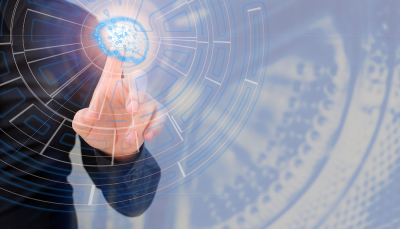Transhumanism: Merging men and machines

One of the most repeated themes of science fiction movies is humans merging with or being replaced by machines. Entire movie franchises are built around these ideas, such as “The Matrix” and “The Terminator.” One of “Star Trek’s” most iconic antagonists were the “Borg,” a blend of biological and technological elements that were pretty-near invincible. They told every species they encountered that “resistance is futile.”
In movies, the merger of man and machine is sometimes a blessing and sometimes a curse. In real life, however, there’s an entire movement committed to seeing this synthesis all the way to its logical and biological end, which—they promise—will be terrific. It’s called Transhumanism.
Transhumanism is the subject of the most recent, must-read two-part series by Dr. Glenn Sunshine at BreakPoint.org. There’s a lot more in his articles than I can cover here, so I’ll limit my discussion today to the Transhumanist dream, or as I’d call it, the nightmare, of merging humans and computers.
Popularized by the 2005 book, “The Singularity is Near,” futurist Ray Kurzweil predicts that advances in computing will eventually allow machines to match and then exceed the ability of the human brain to process information.
In a parallel development, technologies such as PET scans and MRIs will enable us to “reverse-engineer” the human brain. While this may sound like science fiction, Kurzweil insists that it’s inevitably “science fact.” After all, as he put it, our brain is a complex hierarchy of complex systems, “but it does not represent a level of complexity beyond what we are already capable of handling.”
As our computational power increases, the “reverse-engineering” of the human brain will supposedly make it possible to “upload” a human brain into a computer. To oversimplify what is a very complicated prediction, “uploading” our brains will result in neural implants that will “augment” our natural abilities. Over time, this “augmentation” will blur the line between the natural and the synthetic until any distinction is meaningless.
Of course, trusting in Kurzweil’s scenario (especially that, even if it is possible, it will also be good) is every bit an act of faith as believing in the Second Coming, only without a Resurrection.
Underlying the Transhumanist faith is a purely materialistic worldview. As Glenn Sunshine writes, materialism “assumes that matter and energy are all that exist. Our minds are thus a product of our brains, which are nothing more than highly complex computers.” In such a world, it only makes sense that we could eventually create machines that can do everything human brains can do, and maybe even more.
And if, as materialism suggests and Kurzweil predicts, there is no “essential difference between our brains and computers . . . we should be able to create interfaces between our brain and the super-intelligent computer network, allowing us immediate access to all the information on whatever replaces the internet.”
Still, as Glenn reminds us, this is quite an assumption. Not to mention is such a worldview forced to regard human consciousness—the awareness of ourselves and the world around us—as an illusion of sorts because, as physicist Adam Frank has written, it can’t explain consciousness or even the nature of the “matter” in “materialism.”
To put it in computer terms, for the materialist, there is no software. There’s only hardware. It’s like answering the question “What’s a MacBook?” by listing components such as processor and storage drive, but completely ignoring its operating system.
Go ahead, by the way. Delete the operating system from your computer and see how well it works. (Hint: it won’t…)
Though Transhumanism should remain the stuff of science fiction, a lot of money is being invested in order to make it science fact. Just this week, for instance, Microsoft invested about a billion bucks in one of Elon Musk’s Transhumanist projects.
Which is just another reason for all of us to understand the worldview behind Transhumanism—beforeresistance becomes futile.
Originally posted at breakpoint.org





















